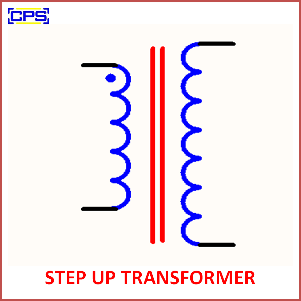A Step-Up Transformer is an electrical device that increases the voltage level from its input (primary winding) to its output (secondary winding) while maintaining the same power level, aside from minor losses. It operates based on the principle of electromagnetic induction and is commonly used in power transmission and industrial applications.

Key Features of a Step-Up Transformer
- Voltage Increase:
- Converts low voltage at the primary side to a higher voltage at the secondary side.
- Winding Configuration:
- The secondary winding has more turns of wire than the primary winding, resulting in the step-up effect.
- Magnetic Core:
- Typically made of laminated iron or other magnetic materials to enhance efficiency.
Working Principle:
- Electromagnetic Induction:
- When an alternating current flows through the primary winding, it generates a magnetic field in the core, inducing a voltage in the secondary winding. The higher number of turns in the secondary winding produces a greater output voltage.
Applications of Step-Up Transformers:
- Power Transmission:
- Increase voltage levels for efficient long-distance transmission, reducing energy losses.
- Industrial Applications:
- Power equipment that requires higher voltage levels.
- Renewable Energy Systems:
- Step up the output voltage of solar panels or wind turbines for grid integration.
- X-Ray Machines:
- Provide the high voltages needed for generating X-rays.
Advantages:
- Enhances efficiency in power transmission by reducing current and associated losses.
- Provides electrical isolation between input and output circuits.
- Reliable and durable in high-demand applications.
Disadvantages:
- Limited to AC systems.
- Inefficient under very low load conditions.
- Large transformers can be costly to install and maintain.
